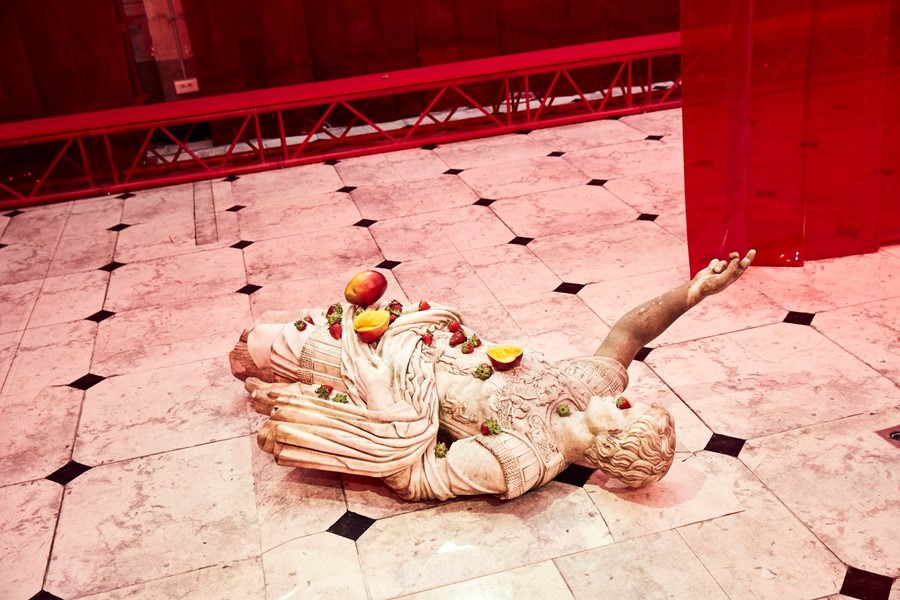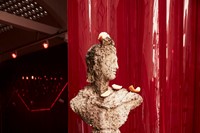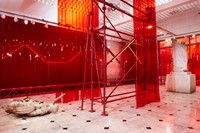Appearances can be deceiving, writes Liam Hess – both in sculptor Tony Matelli’s fruit-scattered classical statues, and in John Galliano’s own opulent ease
In the surprise podcast episode released before the debut of his first ‘Artisanal’ collection for men, John Galliano explained his desire to “discover a new sensuality, a new sexuality” within the more limited vocabulary of menswear. While this might seem almost contradictory, Galliano’s vision at Maison Margiela has been consistently defined by these artful, considered clashes – an alchemical ability to take disparate elements that would seem impossible companions on paper, then mash them up to create something strangely appealing. Applying the couture-level skills of his atelier to the staples of every man’s wardrobe, he delivered a rollercoaster of tweed blazers and utilitarian overalls styled over sensual, feminine details such as wasp waist corsets and tulle-covered peekaboos.
A greater surprise came by way of the set: there were red PVC strip curtains you might expect to see at the entrance of an industrial freezer, hung off skeletal scaffolding and punctuated with artworks by American artist Tony Matelli. The sculptures, inspired by classical statuary, were littered with half-eaten fruit. Staged at the Margiela atelier in the buzzy neighbourhood of Belleville, Matelli’s work was more than just a striking addition to the catwalk mise-en-scène: it also shed light on some of Galliano’s quieter design aspirations.
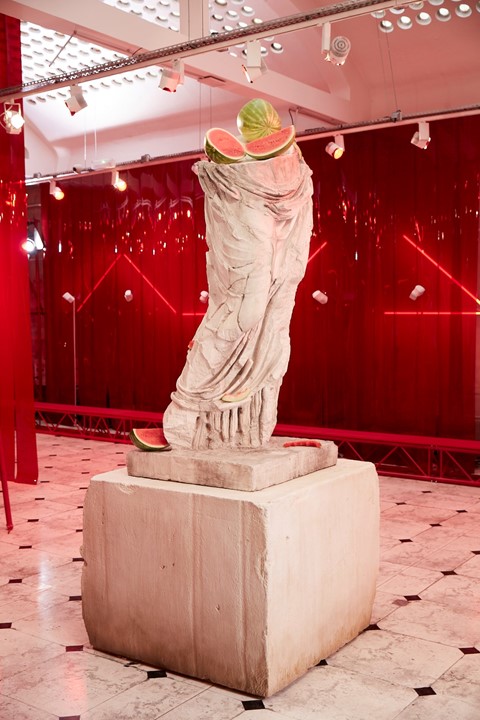
There are plenty of parallels to draw between Matelli’s art and Galliano’s designs. Both play with the history of their disciplines – in Matelli’s case, taking sculptures from classical antiquity; for Galliano, Vionnet-inspired bias-cut draping – and then rehashing them to become bracingly new. There’s also a distinct undercurrent of the absurd: whether the painted bronze split mangoes and orange peel balanced across Greco-Roman busts, or the patent leather belts and high-waisted skinny trousers delivered in kitschy pastels.
Perhaps Matelli reveals that we’ve got Galliano’s tenure at Margiela all wrong. It’s more than just a flirtation with the absurd: it’s an all-out, cheeky sense of humour. Marabou trims and elbow-high marigold gloves aren’t details you would spot at any other house in a season dominated by streetwear, but for Galliano these provocative elements are a two-fingers-up to the menswear status quo. As Matelli perhaps does more literally by taking works from the canon of art history and covering them in decomposing fruit, Galliano deliberately pokes fun at the dominant hierarchies of good and bad taste.
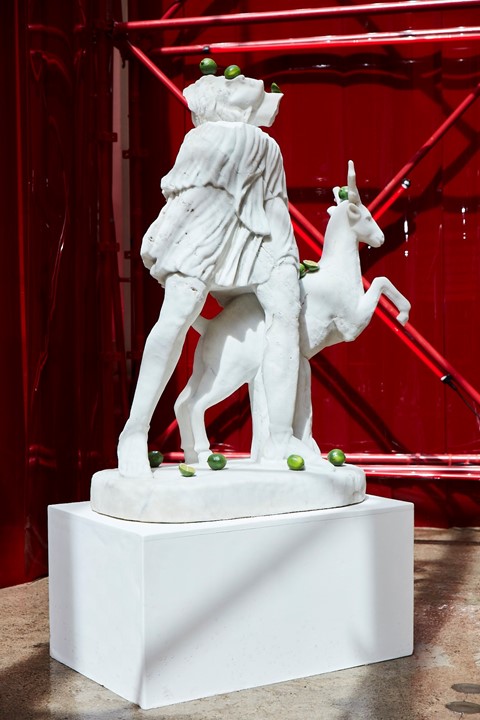
The French Surrealists infamously distilled their artistic ambitions with the metaphor of a sewing machine and an umbrella meeting on a dissecting table, explained later by Max Ernst as “a linking of two realities that by all appearances have nothing to link them, in a setting that by all appearances does not fit them”. More broadly, any comedian would tell you that the best jokes land by drawing together two unexpected people, places or objects that by some hilarious twist of fate end up occupying the same world. When everything in menswear has been done before, it’s only by these unlikely juxtapositions that new ideas are sparked – something Galliano understands better than anyone else.
What makes this mischievous wit more than just a gimmick, however, is the virtuosic technical skill on show. Matelli’s fruits aren’t made on the cheap: they are cast from bronze then meticulously hand-painted to resemble the real thing. Working on the bias is one of the most notoriously difficult skills for any designer to master, even within the realm of womenswear – to effortlessly apply it to men’s tailoring with such a lightness of touch is nothing short of extraordinary. These are chimerical clothes for a modern dandy – a flamboyant update on the overdone menswear codes – and the bravura execution of Matelli’s sculptures only hammers this home.
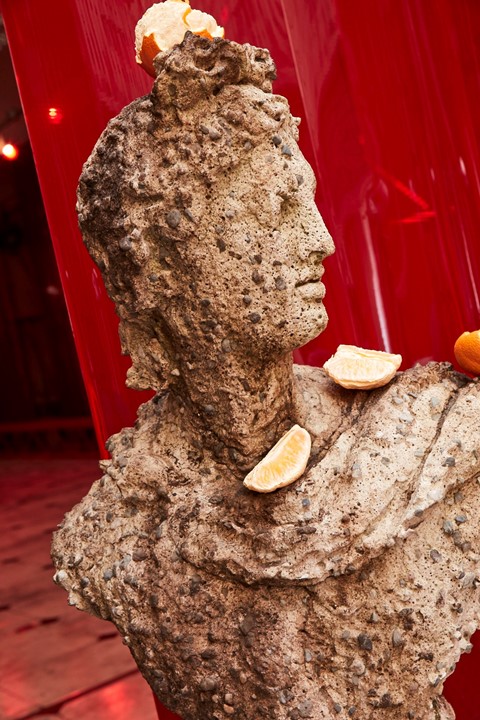
Whether one is likely to see your average menswear customer walking down the street wearing all of this is beside the point: they exist in an alternate, paradoxical universe, both steeped in history and boldly new. By inviting Matelli to share his stage, Galliano only makes it even clearer there’s nobody else operating on his radical, quick-witted wavelength.
